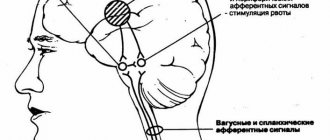SPECIALISTS Gynecologist Gynecologist-endocrinologist Pediatric gynecologist Mammologist-oncologist Dermatologist Hirudotherapist Intimate plastic surgery Doctor Contour plastic doctor Ultrasound doctor SERVICES AND PRICES Gynecology Mammology Ultrasound diagnostics Paid tests Intimate surgery Contour plastic Treatment for women PROMOTIONS AND DISCOUNTS Students Teams Friends and subscribers am For residents of the region For pensioners Promotions in clinic
How many days later can pregnancy be determined if a girl has had sexual intercourse and no contraception was used? Or is this a long-awaited, planned event expected for a long time? In this material we will tell you about the main methods, how to quickly and more reliably find out about pregnancy and when it is best to use them.
So, the main thing is why is all this necessary and when should you take this issue to the clinic? Determining pregnancy in the early stages is necessary if at some point the girl felt the birth of a new life within herself. Either to one degree or another does not exclude such a possibility. I would like to say right away that we will not discuss the exact determination of weeks of conception and testing using “folk”, “grandmother’s” methods (soda, iodine) in order to save time. We will ignore various online services, such as “drop a drop of urine on the touchpad, move your finger counterclockwise and immediately find out the result in 1 minute”, for they are, at a minimum, not scientific, and more specifically, for quackery.
How does conception occur?
During ovulation, a mature egg is released into one of the two fallopian tubes.
After sexual intercourse, sperm that enter the vagina rush up the cervix into the uterine cavity, and then into the fallopian tubes, where fertilization occurs. The fertilized egg begins to divide rapidly - pregnancy occurs. Approximately 7-8 days after conception, the dividing egg descends into the uterine cavity and attaches to its wall. From the moment of fertilization, the woman’s body begins to produce the hormone human chorionic gonadotropin (hCG). It is the concentration of this hormone that rapid pregnancy tests react to. However, in the first weeks after fertilization, its content in the blood is too low, which is why pregnancy tests are not reliable in the first weeks after fertilization. But the woman herself can feel the changes that occur in her body under the influence of this hormone.
Can you trust traditional methods?
As you can see, there are many methods for determining pregnancy, including traditional ones. But should you trust them? There are many adherents of such methods, but there is no scientific basis for them. The fact is that the probability of answering the desired question is always 50%: you are either pregnant or not. Only the beautiful lady can decide whether to believe these methods.
Determining pregnancy using traditional methods has its advantages - they do not require cash injections, trips to hospitals or laboratory tests. These methods will simply give the woman satisfaction of her curiosity until she goes to see specialists.
A woman, answering her questions “How to determine pregnancy in the first days of conception,” “When the first signs of pregnancy appear after conception,” “How to determine pregnancy in the early stages without a test,” will be able to choose any of the above methods. She will also calm herself down a little by giving up bad habits and protecting the fetus from negative influences before seeing a gynecologist. In addition, only a doctor can make sure that the fetus is developing correctly, and nothing threatens the expectant mother and her child.
Woman's well-being
Signs of early pregnancy are individual and depend on physiological characteristics. Moreover, even for one woman they can differ during different pregnancies. A week after possible conception, a woman may experience fatigue, malaise, drowsiness, a slight heightened sense of smell, or an increased urge to urinate. Sometimes small spotting occurs - the so-called implantation bleeding, which occurs when a fertilized egg attaches to the wall of the uterus. It must be remembered that all these signs are very subjective and should not be relied on.
Subjective first signs of pregnancy
Often the first changes in the body that a woman differentiates as signs of pregnancy may turn out to be symptoms of PMS. However, if you have never suffered from premenstrual syndrome before, you should pay attention to these:
- Feeling of weakness, malaise and increased fatigue even with usual exercise.
- The appearance of drowsiness during the day and insomnia at night.
- Unstable emotional state. A woman’s mood can change dramatically in a matter of seconds without good reason.
- A feeling of heaviness in the lower abdomen, lower back and pelvic area.
- Constant headache and dizziness.
- Change in libido. Moreover, it can either decrease or increase.
- Periodic sensations of heat or chills that replace each other.
- Increased sensitivity of the mammary glands to the point that any touch to the breast results in extremely unpleasant sensations and even pain.
- Increased appetite or change in eating habits. From the first days of pregnancy, a girl may want to eat more or eat dishes that she did not like before.
- The appearance of an unreasonable feeling of nausea. In some cases, heartburn and vomiting occur. This condition is called toxicosis.
- Increased sensitivity to odors and distortion of the sense of smell.
All of the above signs cannot accurately answer the question: has pregnancy occurred or not? However, they allow us to suspect it and move on to more accurate and reliable diagnostic methods.
Basal temperature measurement
Fluctuations in basal temperature reflect the course of the menstrual cycle. So, during the cycle this indicator is approximately 36.5⁰ C. When ovulation occurs, the temperature exceeds 37⁰ C and remains until the onset of the next cycle, falling to 36.5⁰ C the day before the onset of menstruation. However, if the egg is fertilized, the temperature does not drop, but remains at a level above 37⁰ C. This method cannot be called very reliable, since if a woman has hormonal disorders, temperature readings cannot have diagnostic value. In addition, temperature data can be affected by incorrect measurement, stress, overwork or climate change.
Clinical symptoms at the beginning of pregnancy
Already in the first few days after conception, the following conditions and changes in the body of a pregnant girl may develop:
- Early factor. This is the name of a special substance that is released 1-2 days after fertilization. According to the data obtained, it is found in 67% of examined women whose pregnancy was subsequently confirmed.
- Bloody discharge from the genital tract. They may have a yellowish or pinkish tint and appear when the fertilized egg attaches to the uterine walls. This usually happens at the end of the first, beginning of the second week after conception.
- The increase in basal temperature that appeared at the time of ovulation persists for a long time if fertilization has occurred. Its measurement can indirectly confirm the occurrence of pregnancy. The general body temperature may also rise to 37 degrees.
- Paresthesia, pain and cramps in the calf muscles. As a rule, they occur late in the evening or at night, causing sleep disturbances and even insomnia.
- A decrease in blood pressure, which is manifested by severe weakness and dizziness. With significant hypotension, fainting is possible. The risk of developing this condition is prolonged exposure to a stuffy, unventilated room or standing position.
- Decreased immunity. Manifested by frequent colds. Also, against the background of immunodeficiency, pregnant women may be bothered by genital candidiasis or, in other words, thrush.
- Increased urge to urinate. Most often this symptom appears in later stages of pregnancy, but it can also occur in the first days.
Despite the huge number of signs, most often a woman pays attention to a delay in menstruation. And for good reason. This is the most obvious and accurate symptom that should lead you to certain thoughts. Of course, menstrual irregularities occur in a huge number of pathological conditions. However, if you are planning a pregnancy, a delay may be the first bell indicating the onset of the long-awaited conception.
Immediately after the onset of the above sign, you can conduct a test that is sensitive to an increase in hCG.
Pregnancy tests
Dip and tablet tests that detect pregnancy using a urine sample, as well as blood tests for pregnancy, are related to the hCG hormone. Its blood level doubles every two days in the first weeks of pregnancy. To obtain a reliable result, it is recommended to take a laboratory blood test for hCG no earlier than 3-4 days, and use test strips no earlier than 7 days after a missed period. If the test result is negative and there is no menstruation, you need to repeat the test or consult a doctor.
When will an ultrasound show pregnancy?
Reasons and goals of early ultrasound diagnosis during pregnancy
Before the first scheduled examination, a woman is recommended to visit an ultrasound specialist in several situations:
- previously there were problems with pregnancy (miscarriages occurred);
- with positive tests and elevated hCG levels, the doctor does not see pregnancy during the examination;
- According to calculations, the period has already been several weeks, and the second strip of dough is very pale;
- after a long delay, brownish discharge appeared, not similar to menstruation;
- there is nagging pain in the lower abdomen;
- When pregnancy is confirmed by a doctor, bloody discharge suddenly appears.
Quite rare, but there are cases when the fertilized egg does not reach its final destination, but is fixed in the tube. This pathology is called an ectopic pregnancy. It can pose a danger to a woman's life. In the absence of timely measures taken, the risk of infertility is high. Ultrasound examination can identify a dangerous situation and help avoid serious consequences.
A hardware examination will allow you to find out whether there is a threat of miscarriage due to pain in the lower abdomen and bloody discharge. An ultrasound can be a lifesaver for the fetus. An ultrasound diagnostic method can detect the cause of a long delay when pregnancy is not confirmed. This could be a cyst, fibroma, or a very dangerous disease called “hydatidiform mole”, in which all the signs coincide, but conception has not occurred.
Types of ultrasound examinations
There are four types of pelvic ultrasound that are practiced in gynecology. Brief description of each:
- The transrectal view involves inserting a sensor through the rectum. It is carried out for girls who are not yet sexually active. Not used to determine pregnancy.
- The transvaginal view involves inserting a sensor through the vaginal tract to the uterus. It is most accurate in detecting pregnancy in the early stages.
- The transabdominal view involves examination using a special probe without penetration. The device is inserted into the body through the anterior wall of the abdominal cavity. When determining pregnancy in the early stages, the method does not guarantee an accurate result.
- A combined examination involves transabdomial and vaginal ultrasound.
The optimal way to detect pregnancy in the early stages is the transvaginal method. However, it cannot always be used. There are contraindications and risks of complications.
How to prepare for research
If an ultrasound examination is not performed on an emergency basis, then it is necessary to prepare for the procedure in advance. A couple of days before the examination, it is advisable to avoid foods that can cause increased gas formation:
- cabbage;
- legumes;
- baked goods;
- carbonated drinks;
- grapes;
- pears
An increased amount of gases in the intestines will interfere with the examination, which is already a rather complicated procedure in the early stages. Before a transvaginal ultrasound, the drinking regime can remain normal. However, your bladder must be empty during the procedure.
Transabdominal examination, on the contrary, is carried out when the stomach is full. To do this, three hours before the procedure you need to drink at least a liter of liquid and you cannot go to the toilet. If this condition is not feasible for a pregnant woman, then it is allowed to reduce the time period for filling the bladder to an hour. The day before a vaginal ultrasound examination, it is recommended to refrain from having sex. Any type of ultrasound diagnostics does not require any further preparation.
Progress of the procedure
Transvaginal ultrasound is somewhat different from transabdominal ultrasound in terms of the procedure. In the first case, the woman takes off everything below the waist, lies face up on the couch, and spreads her legs. An oblong-shaped sensor is inserted into her vagina, onto which a condom is placed before the examination begins.
During a transabdomial ultrasound examination, you should only expose your stomach and lower your panties a little. The procedure is also performed in the supine position. First, the stomach is lubricated with a special gel. Then the doctor begins to move the sensor along it. After the procedure is completed, the gel applied to block air access is wiped off with a disposable napkin.
Ultrasound examination in both cases lasts only a few minutes. During this time, the specialist receives comprehensive information about the location of the embryo, its size, heart rate, etc. During the procedure and after its completion, the woman does not experience any discomfort. However, when the bladder is full, the pressure from the sensor may increase the urge to go to the toilet.
Possible errors in ultrasound results
Despite the fact that ultrasound is considered one of the most accurate ways to determine pregnancy for a period of five obstetric weeks, there are cases when the device does not see the embryo or diagnoses a conception that does not exist. The reasons for the errors in the research results may be:
- Excess weight of a woman during transabdomial ultrasound. A large fat layer prevents the sensor from gaining full access to the object being examined.
- Broken or outdated equipment.
- Insufficiently qualified specialist conducting diagnostics.
- The presence of neoplasms (polyps, cysts) in the uterus, which the doctor may mistake for a fertilized egg.
- A common situation is when the date of the last menstruation indicates five obstetric weeks, but the embryo is not visible on ultrasound. This happens in women with long menstrual cycles. The actual period at the time of examination turns out to be too short, and the sensor is not able to see the embryo.
It is believed that errors in determining pregnancy at its very beginning using ultrasound occur in one out of ten cases. Therefore, you cannot trust the results of the equipment 100 percent. You need to continue to monitor your condition and try other methods. If there are doubts about the quality of the equipment that was used or the competence of the specialist, you can undergo a re-examination.
Is it worth doing an ultrasound to determine pregnancy?
It is not for nothing that the first planned ultrasound examination is prescribed at 11-12 weeks. During this period, the embryo has already developed so much that enough information can be obtained about it. However, it is not too late to terminate the pregnancy if serious abnormalities in the development of the fetus are detected.
Women who get ultrasounds earlier still return to the specialist's office a few weeks later. The negative impact of ultrasonic waves on an unborn child has not been proven by science, but it has not been refuted either. You should not risk the health of your unborn child and resort to the procedure in the absence of indications more often than necessary.
It is also important to know that the vaginal method, which is considered the most accurate in the early stages, can cause a miscarriage. This method is not recommended for couples who have been planning a pregnancy for many years, as well as women at risk. It is better to wait a couple of weeks when you can resort to the traditional method - without penetration.
To eliminate risks, it is better to undergo the procedure when an ultrasound shows 100 percent pregnancy. Before an ultrasound examination, you should consult a gynecologist. He will help you choose the optimal time for the examination and the type of procedure.
Original article https://medsins.ru/uzi/na-kakom-sroke-uzi-pokazyvaet-beremennost.html
Ultrasound and doctor's examination
The doctor will be able to determine pregnancy, or rather, detect the fertilized egg, using an ultrasound examination with a transvaginal sensor approximately 5-6 days after the delay of menstruation or 3-4 weeks after fertilization. This method is considered the most reliable, although this study is usually prescribed at a later date. Without an ultrasound, during an external examination at the earliest stage of pregnancy, the doctor will be able to determine pregnancy.
History of contraception Ancient times One of the first mentions of a condom as a means of protection in antiquity - approximately 3000 BC. In Cretan... Read more
HIV infection: causes and symptoms of infection What is HIV infection HIV infection is a disease caused by infection with the human immunodeficiency virus (HIV). This virus is slowly...
More details
Intrauterine Device An intrauterine device is a small plastic device that is inserted inside the cervix and provides contraceptive…
Read more
How was pregnancy determined before?
Previously, women did not have the modern benefits of civilization. Therefore, we had to be content with what we had in the house. The bulk of all traditional tests involve urine, but there are some very unusual methods.
So, how to determine pregnancy using folk remedies:
- Plant two bulbs. For one, wish for a positive result, and for the second, a negative result. Next, wait until they grow up to 4 centimeters. Which of the bulbs will do it faster - that is the answer.
- When a woman dreams of fish, this means pregnancy. A sign that modern ladies also trust.
- It is believed that in the early stages the color of urine has a bright yellow tint.
- A metallic taste in the mouth also indicates an interesting situation.
Traditional methods for determining pregnancy in the early stages may not be the most reliable, but they are inexpensive and are still common.
Conception
The sacrament of the fusion of two sex cells - the egg and the sperm, as a rule, occurs 14-13 days before menstruation. But sometimes a woman’s ovulation day in her menstrual cycle shifts by several days. The reason for this may be stress, illness, sudden climate change...
To accurately determine the favorable day of conception, auxiliary methods come to the rescue. An ovulation test is often used. This is an easy, simple and affordable way. To conduct the study, saliva or urine is used (read the instructions for each test) and the test itself. Currently, there are many types of tests, but the meaning is the same - determining the level of luteinizing hormone. This hormone is produced by the pituitary gland and LH peaks one day before ovulation. The test is considered positive when the test line is the same or brighter than the control line. If you receive a positive result, this and the next few days will be the most favorable for conceiving your baby.
Another popular and informative method is folliculometry. This is multiple ultrasounds performed in one menstrual cycle. During the study, the dominant follicle is determined, its maturation is monitored and the fact of ovulation is established. The doctor calculates the dates individually, based on the duration of the menstrual cycle. Subtract 14 from the days of the menstrual cycle to get the day of ovulation in the menstrual cycle.
For example: the menstrual cycle is 30 days - 14 = 16. Ovulation occurs on the 16th day of the menstrual cycle. The first ultrasound is performed 6 days before ovulation. The calculation is carried out using the formula 16-6=10. In this example, it is the 10th day of the menstrual cycle. At the first ultrasound, the doctor will determine the next visit. More often it is 3 studies per cycle.
We must not forget about the old proven method - basal temperature. Temperature is measured in the rectum from the first day of the menstrual cycle, in the morning, at the same time, without getting out of bed, with the same thermometer. The results are recorded on the coordinate axis and the result is evaluated. Before ovulation, the temperature decreases, during ovulation and in the second phase of the cycle it increases by 04.0-0.6 degrees. The day with a decrease in temperature and the next day or two will be considered favorable for conception.
The long-awaited day of ovulation has arrived. Exciting anticipation begins.
How to find out if you are pregnant or not at home?
As an alternative to modern tests, some women use unconventional methods. In the early stages, they are not accurate and can be regarded rather as an additional means of control. It is important to verify your results in your doctor's office. How to check if you are pregnant at home:
- Using baking soda. Based on determination of urine pH. In the absence of pregnancy, when mixing soda with urine, you can observe a reaction accompanied by bubbling and hissing of the liquid. During pregnancy, the pH changes and the soda simply precipitates.
- How can you tell if a woman is pregnant using iodine? By dropping the substance into the urine, you can see that the iodine stain of a pregnant woman will remain intact for some time. Otherwise, dissolve.
- Another method for determining whether you are pregnant is to boil urine in an iron pan. Pregnant women will have sediment in their urine. However, this is how the protein behaves, the appearance of which does not always indicate pregnancy.
Tips on how to understand that you are pregnant at home are advisable to use only after the expected date of your period. Until this moment, it is useless to wait for results from these not the most accurate methods.
The appearance of acne.
This symptom is also associated with hormonal changes in the body. Acne can appear even in women who have never suffered from it before. Acne during pregnancy usually disappears when hormonal levels stabilize and no longer bothers the woman. You can often miss this phenomenon, mistaking it for a component of premenstrual syndrome, especially if you have previously been treated for acne. Topical, and especially systemic, retinoids can adversely affect fetal development, so you should stop using these medications if there is a delay.
Dizziness, fainting.
Brief loss of consciousness is usually associated with pressure changes. Even if a woman has never lost consciousness before, she should be especially careful. If you feel dizzy, you should provide access to fresh air: ask those nearby to open the window and ventilate the room. To avoid fainting, try to choose loose clothing made from natural materials that is appropriate for the weather. If your job involves physical labor, then you should consider reducing your workload during the day.
Why is it important to know about early pregnancy?
During pregnancy, every week matters, but it is in the first trimester that the main internal organs of the child are formed. If you learn to correctly identify the first signs of conception, you can promptly adjust your lifestyle and diet to avoid miscarriage, and conduct early diagnosis to identify genetic diseases.
Often at the initial stage of pregnancy, symptoms similar to colds appear. If a woman suspects conception, medications that are safe to take in the first trimester should be selected.
How to determine without a test?
There are many tips on how to understand whether you are pregnant or not at home.
They are based primarily on an assessment of one’s own condition. Indeed, some women claim that from the first days they felt the onset of conception. How to understand that you are pregnant before your period is missed at home:
- Assess the general condition. The appearance of weakness, drowsiness, loss of concentration is typical for a pregnant woman. If such a condition appears suddenly, then you should be wary.
- Frequent urination. Against the background of hormonal changes, a pregnant woman increasingly has to “run” to the toilet.
- How to understand that you are pregnant by changing eating habits. The desire to eat something salty, sweet or unusual is typical for a pregnant woman. A craving for strange combinations can also signal the onset of conception. It is difficult to say how many days later you can understand that you are pregnant. Unusual preferences sometimes appear immediately, and sometimes later.
- Toxicosis. An aversion to food and the smell, leading to vomiting, is observed in the early stages if a girl is pregnant.
- Pressure drop. Often, pregnancy is discovered in an unsuspecting woman after a drop in blood pressure. In some cases, the readings are so low that the pregnant woman loses consciousness.
- How to tell by your belly whether you are pregnant or not. After conception, the pulsation in the abdomen can be heard better. It is enough to press on it to make sure that you are pregnant.
- Dreams. It’s a subjective factor, but a number of girls are convinced of its veracity. A woman dreams of fish, clean reservoirs, small children. On what day can you understand that you are pregnant through dreams? A number of mothers claim that they saw similar pictures in the first days after conception.
Constant fatigue and loss of strength.;
These early signs of pregnancy occur primarily as a result of the body's natural reduction in immune defenses so that the embryo can fully grow and develop. Try to reduce your stress at home and at work and distribute tasks in such a way that you do not get tired. You should not drink a lot of coffee and supplements with a high caffeine content: it depletes the body's internal resources, giving a temporary boost in strength for a short time.
How can I tell if my girlfriend is pregnant?
Often representatives of the fair sex deliberately report an imaginary child. Some people try to maintain relationships in this way, while others pursue selfish goals. You can bring the second half to clean water. First you need to carefully observe the girl’s behavior. When a girl is pregnant, she is characterized by frequent mood swings, tears for no reason, followed by laughter. However, similar manifestations accompany premenstrual syndrome.
It is also worth paying attention to the body. Enlarged breasts, swollen nipples and their darkened halos signal that the woman is pregnant. Swelling of the legs may also occur after conception. Veins in the legs often become more visible. If a girl feels sick at the sight of food, feels weak and gets tired quickly, then this should also be alarming.
Absence of menstruation is a more accurate symptom of pregnancy. It is not always possible to track this moment, but if a guy lives with a girl, then this is quite possible. Of course, you need to know the expected start dates of your periods.
Sudden mood swings.
You woke up in a good mood, but a minute later absolutely everything irritates you? This is not a mental disorder. Until hormonal levels stabilize, constantly changing emotions, a sudden transition from negative to positive, can accompany a woman throughout pregnancy. Explain to your loved ones that now you are more sensitive to everything that happens around you. When your hormonal levels return to normal, you will feel better. This usually happens in the second trimester of pregnancy. If emotional problems bother you too much, be sure to ask your doctor to prescribe you a mild sedative that is not contraindicated for pregnant women.











